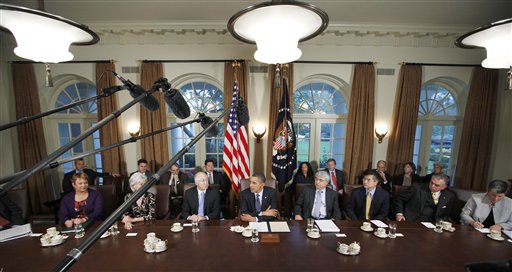The defects of the Obamacare website have become well known. But the problems with the law go further than the website. These problems are not incidental, but central to its design and the intentions of its architects.
Videos by Rare
Many Obamacare backers, including Barack Obama, would prefer “single-payer” health insurance. The government would pay for everything and you would get healthcare for free.
There is an inconsistency here with the way we treat other things regarded as the basics of life — food, shelter, clothing. Government subsidizes food purchases only for some — though a sharply increasing number in the Obama years — through food stamps.
It also has subsidized housing through loan guarantees and laws encouraging mortgages for the uncreditworthy — policies that resulted in the financial crisis of 2008 through 2009.
Government hasn’t yet proposed subsidizing the purchase of clothing. But the thought is that healthcare, imposing disproportionate costs on some individuals, should be provided for free.
Obamacare’s architects knew the votes weren’t there for single-payer insurance, so they fashioned their healthcare legislation and regulations to reduce out-of-pocket costs for people with different healthcare needs.
Insurance policies have to include coverage for services that many consumers will not need, including maternity coverage and mental-health treatments.
Even Obamacare enthusiasts, such as Harold Pollack of the University of Chicago, suggest that the administration should “revisit just how minimal the most minimal insurance policies should be.”
But that would work against the Obamacare goal of moving everyone toward paying less out of pocket for healthcare.
Even more egregious is Obamacare’s requirement that policies for one age group cost no more than three times the cost for another. In practice, this means that young consumers, who incur few heathcare costs, are asked to subsidize people in old age groups, who incur many more.
This is the opposite of the progressive economic redistribution, which American liberals usually favor.
People in their 20s tend to have negative net worths. They owe more — in consumer debt, on college loans — than they have in bank accounts, home equity and financial assets.
In contrast, people in the 55-64 age group, the oldest covered by Obamacare, tend to have relatively high net worths. Federal Reserve wealth statistics consistently show that Americans reach their peak net worth in these years. After age 65, they start spending that net worth down.
So, why did the Obamacare architects want to take from the poor and give to the relatively rich? Because they want to make health insurance less like insurance — which protects you against unlikely and unwelcome events — and more like an entitlement.
Equalizing premiums tends to move in that direction. The fact that Obamacare policies are like auto-insurance policies that cover oil changes is, for the Obamacare architects, a feature — not a bug.
Of course, reducing healthcare outlays once the insurance premium is paid makes healthcare consumers less price-conscious. It means that market mechanisms that have reduced the cost of noninsurable treatments — cosmetic surgery, Lasik treatments — will not be operating.
And it increases the likelihood that healthcare providers will act like the callous unionized employees in Britain’s National Health Service who let patients in the Mid Staffordshire hospitals die unattended or lie in their own waste.
The problem for Obamacare architects is that people are resisting being conscripted into their service. The low penalties for remaining uninsured in early years, plus the difficulty of using healthcare.gov, mean that many young people are not signing up.
This means that insurers will likely be stuck with a group of subscribers who are relatively sick and will have to raise premiums sharply next year to avoid losses — the death spiral you have been reading about.
It also means that others, particularly those not eligible for subsidies, may go shopping outside the website for policies that cover catastrophic costs and leave them free to decide whether and how much to spend on routine care.
The Obama administration’s response has been lawlessness — suspending the law on employer mandates, subsidy verification, subsidies for federal-health-exchange policies and availability of pre-existing policies.
The insightful liberal journalist Thomas Edsall asks on his New York Times blog, “Is the federal government capable of managing the provision of a fundamental service through an extraordinarily complex system?”
The answer on healthcare — as on food, shelter and clothing — seems to be “no.”
© THE WASHINGTON EXAMINER
DISTRIBUTED BY CREATORS.COM
Related article
- Taxpayers could fund insurance bailouts, but not if these lawmakers have anything to do about it (rare.go-vip.net)




One Comment
Leave a ReplyOne Ping
Pingback:BARONE: Obamacare’s architects plugged their ears and misled public | Rare